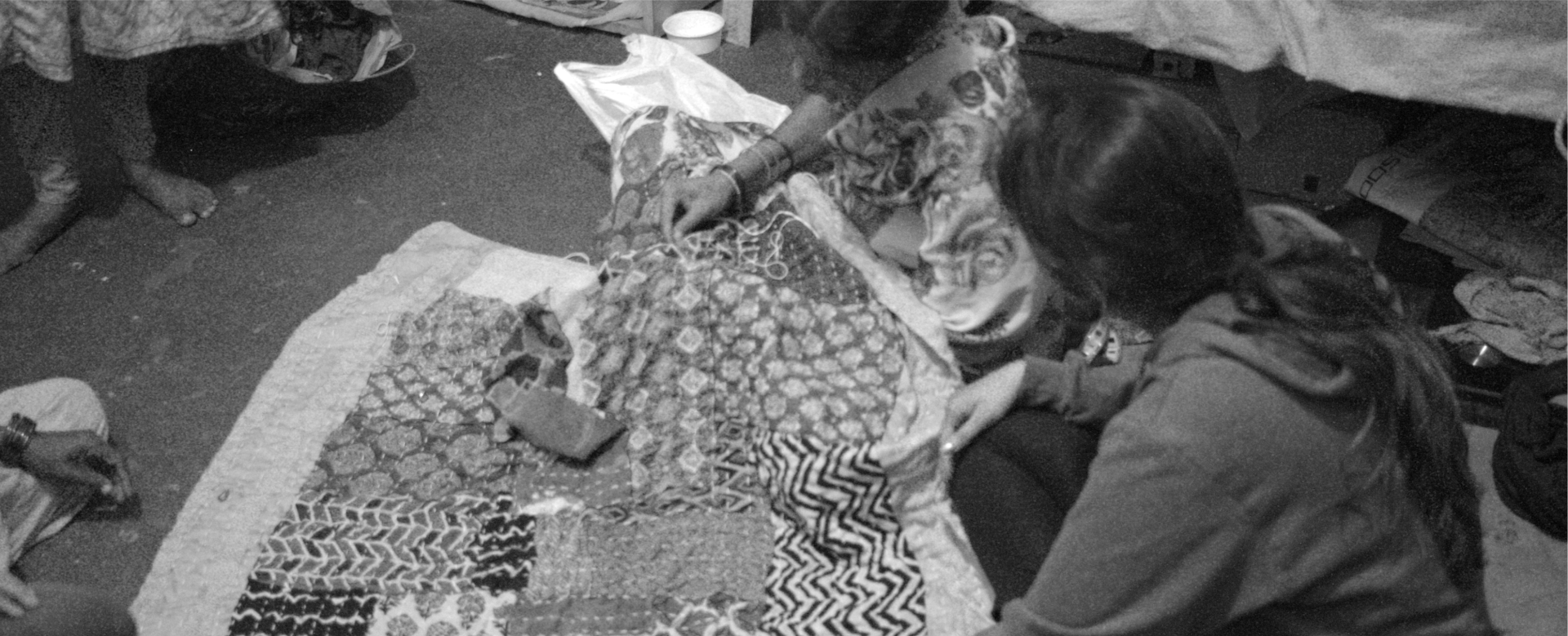
The Conventional Guide to Textile Upcycling
This century is best described as an era of uncertainty. Our world as we know it and the future we want are at risk. Climate change and the repercussions of human negligence is discussed vastly all over the globe lately. And one of the major contributors to the deteriorating condition of the planet is the global textile industry. Textile and fashion are resource-intensive and polluting industries that cause serious damage to the environment. Over the recent years, the fashion industry’s caustic impact on the environment has worsened to dramatic levels and its impacts don’t stop the moment the clothes are tastefully hung in the retail store, purchased, and then packed off home by the consumer. Instead, the negative thread of impacts continues during the consumer-use phase as the consumer washes, dries, irons, and dry-cleans their clothes and then discards the clothes, too often into landfill as opposed to reuse or recycling.
In an age of fast fashion, where textiles pollute the planet at an alarming rate, initiatives for eco-innovation of ideas and materials and its widespread awareness are more than necessary. It has become important to incorporate constructive changes in individual lifestyles to bring change. Collective contributions from consumers, manufacturers and the government can surely save the planet. But, despite all the complexities, the industry has started to take a turn and opt for measures to reduce waste. One such sustainable and effective measure is textile/fashion up-cycling.
Every year, millions of tonnes of textiles are wasted even before the garments are sold to consumers in the form of cutting room waste, rejected pieces, trim waste, and unused materials. In addition to that, with the trendy approach to fast fashion where garments are worn and disposed of at break-necking speed, the idea of re-using the clothes and textile waste by up-cycling them can be a life saver. Textile Upcycling is a creative reuse of items that no longer serves a purpose into something meaningful and of higher value. In simpler words, it is creating purposeful new products using old materials. By reusing such materials to create something valuable, we can contribute to the lesser burden on landfills.
Multiple small business owners have taken up steps to up-cycle the waste and garments they generate by providing new product ranges to consumers. Fabric rugs, decor items, fabric accessories like scrunchies, headbands, bags, and pouches along with upcycled stationery range are the most common up-cycled products we see in the market today. Several brands like Doodlage, Zero Waste Daniel, PatchOverPatch, Fanfare, Preloved, Loti, LataSita, and Refash are among the upcycling fashion brands who are redefining the meaning of up-cycled fashion with their designs and innovation. A beautiful play of waste patches beautifully tailored into something new is truly appreciating. Using fabric deadstock, sampling yardages, and damaged textiles to make new clothes, reusing old sarees to create a new garment out of it and re-utilizing post-consumer garments are other forms of up-cycled fashion that brands are slowly trying to take over. Such practices by designers and small business owners not only save them from waste generation but also contribute to the fact that the adoption of an eco-friendly approach to fashion can lead to a creative outcome, unique fashion, and of course, a better planet.
Since up-cycling isn’t just a manufacturer’s responsibility, consumers’s DIY too can create something new out of their old materials in the comfort of their homes. With a help of little techniques and craft supplies, you can pretty much refurbish your old pieces. Let’s say, you’ve got a plain white shirt that you got bored of, instead of adding the weight of it into the landfill, you can embellish it on your own or get it printed or cut and sew it into a new pattern to make it more relevant to you. Small and easy DIY techniques that are easily accessible in books or YouTube channels can help you in revamping your product. Embroidery, Crochet, eco-printing, tie-dye, sewing, weaving, and quilting are some of the common examples of techniques that can help you. Imagine turning your old jeans into shorts or a handbag, converting your old upholstery into a new patchwork decor item, and turning your old damaged clothes into a braided carpet, isn’t it interesting?
Upcycling surely has become a buzzword on the Internet recently but it isn’t a new concept. It is reinventing the past and finding fresh takes from age-old traditions. We believe various diverse traditional Indian textiles are the biggest source of inspiration for up-cycling techniques for the world. Kantha, an old craft tradition from West Bengal that is known for layering old fabrics and precisely stitching them together is interestingly relevant to many design houses now. Lambani patchwork and embroidery by the Banjara community of Rajasthan is another example of up-cycling waste fabrics into new clothes and art pieces. Such patchwork designs are very commonly seen in garments, stationery, and home decor products. Kathputli craft from Rajasthan, which specializes in creating puppets out of old fabric scraps is an inspiring practice of turning your waste into purposeful materials. And Sujani embroidery from Bihar, known for embroidering undyed textiles with colorful motifs is also seen in its contemporary form in the fashion market these days. When we look around, it’s a world full of self-sufficiency and inspiration, so why not adopt them in a manner that can help us in sustaining the planet?
A growing trend for designers, manufacturers, and brands, upcycling, can save resources and energy, leave lesser carbon footprints, and save space in landfills. While more and more creators are trying to popularize the practice, it is not done on an industrial scale since up-cycled pieces are one-of-a-kind and are sold as unique pieces in the market. But, no matter what the scale is, upcycling is an important technique to enable creativity within the design fraternity, slow down the unnecessary production of textiles, and reduce the scope of waste generation.




Leave a Reply